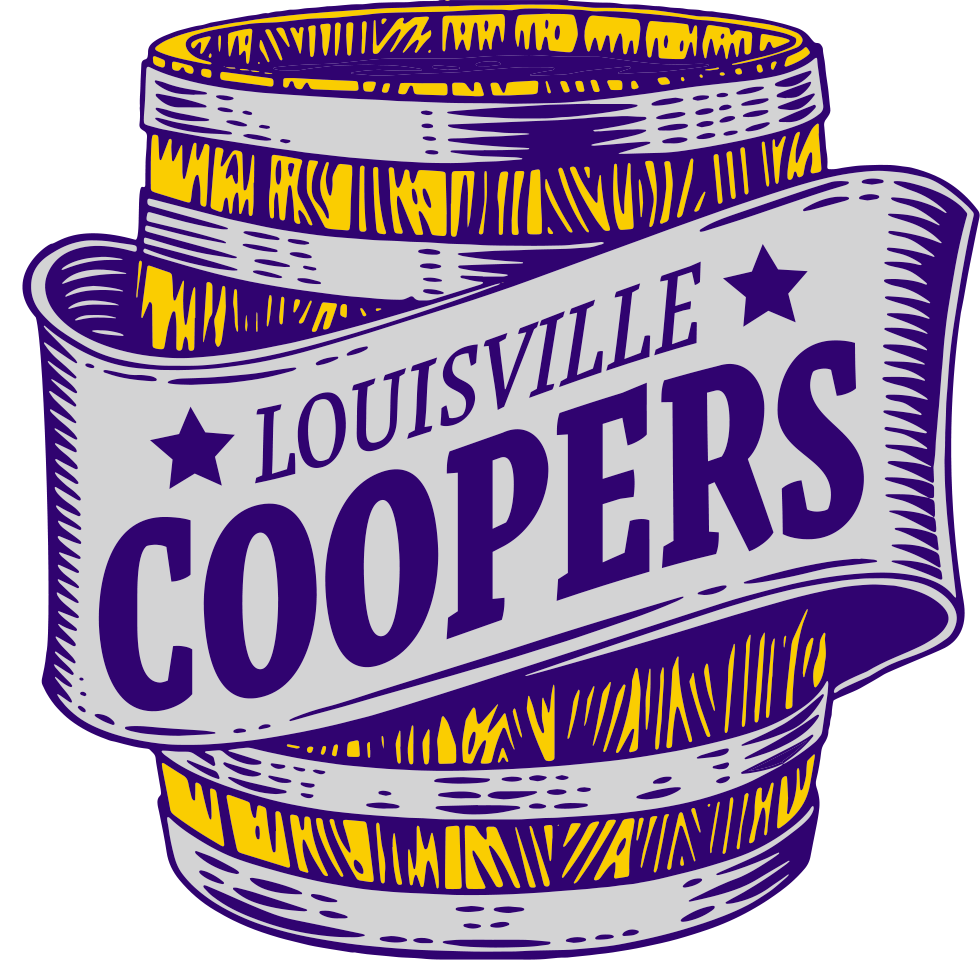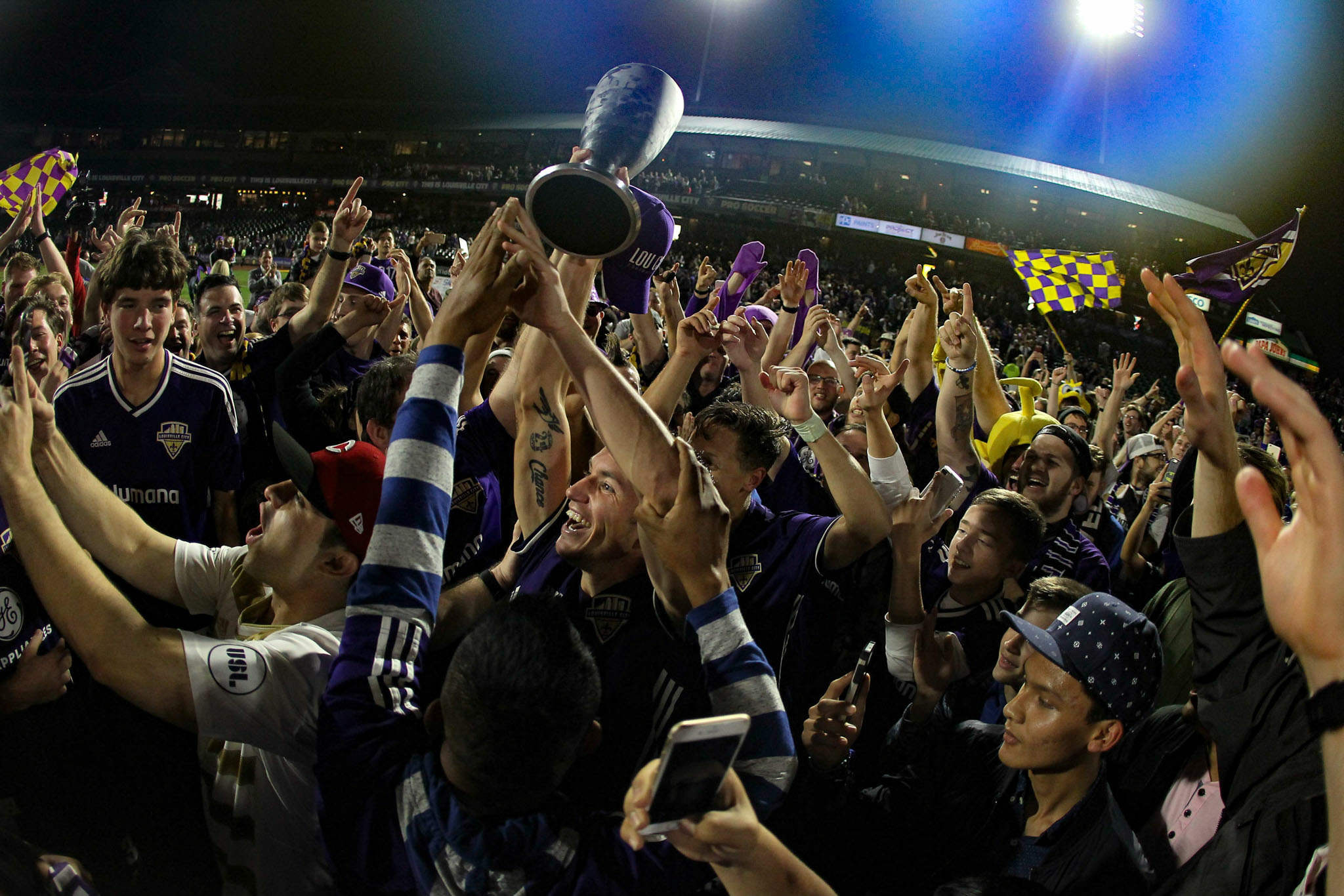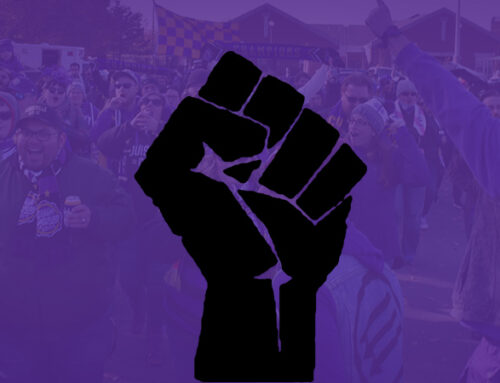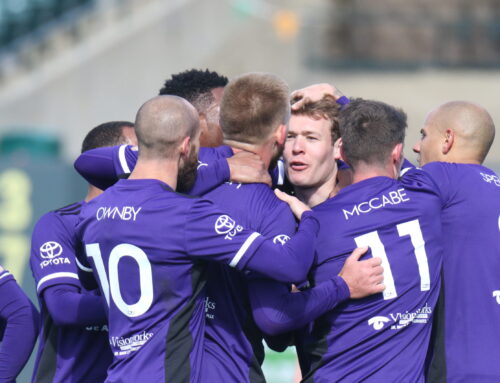By Andrew Oost
Welcome to Part Two of ‘Where Do We Go From Here?’, one fan’s retrospective, and prospective, musings on Louisville City FC. This time we’ll look at the organization and business behind LCFC, what’s gone right, what could be better, and new horizons to be explored.
If You Build It, They Will Stay
The most important day in Louisville City FC history was not June 4, 2014, the day the team was officially announced, and James O’Connor introduced as the first head coach. It wasn’t March 28, 2015, the date of the inaugural game. Neither was it November 13, 2017, the date LC won its first championship, or November 8, 2018, the date it won the second.
The most important day in Louisville City’s history was October 26, 2017, the day that the Louisville Metro Council approved public support for the new Butchertown Stadium, which was the final push needed to attain critical mass for the project. It was at that moment, and only at that moment, that the future of the team was assured.
Put simply, without a stadium of its own, Louisville City’s continued existence would be a dicey proposition at best. Renting Slugger Field from the Bats, and also having to pay the grounds crew to convert the baseball field into a soccer pitch 17 times per year, has been a huge expense. Couple that with the inability to collect any of the concession revenue at Slugger, and it’s easy to see how continued life as a tenant in someone else’s house was never a viable permanent situation for the club.
The club’s only revenue streams appear to be ticket and merchandise sales, and on the rare occasion transfer fees. It’s just not possible to run an organization of Louisville City’s size and ambition on those things alone. No matter how many gray-pocket t-shirts are sold, the club will require more revenue to be self-sustaining.
In the Butchertown Stadium, the team will control the concessions revenue. Anecdotal evidence shows that a soccer crowd trends towards a beer drinking crowd, it’s safe to say that that revenue stream alone will account for a significant windfall each and every home game. Every soft drink, hot dog, pretzel and bag of popcorn sold on game days will become a revenue stream for the club. This is only taking into account the Louisville City events, which will likely not even constitute the majority of the events that take place at the stadium.
Having complete control over the scheduling of games will allow the club to maximize the dates that generate the biggest crowds. Weeknight USL fixtures will become rare, prime weekend dates will become the overwhelming norm, and the team will be able to host friendlies, preseason and US Open Cup games in Butchertown. Given the possibility of deep USL Playoff and Open Cup runs, with a few pre-season or mid-season friendlies thrown in, it’s not unreasonable to think that the Butchertown Stadium could be hosting up to 28 games per season.
Slugger Field has been an adequate temporary home, and it will forever hold dear memories as the first home of LouCity. Slugger has been the venue for many legendary days in LCFC’s brief history, most notably the first Championship in 2017. However, the small field, weird seating setup, poor sightlines, expensive concessions, and yes, even the notorious “Turf Monster”, will hardly be missed.
When considered in the light of American professional soccer history, with so many clubs both large and small that have come and gone due to the lack of solid financial footing, the kind of stability that the Butchertown Stadium will provide for the club simply cannot be overstated.
The Women’s Game
As I was writing this chapter, it occured to me that the subject of a possible Louisville City women’s team deserves an entire feature rather than a passing mention, so I’ll sum up my thoughts on the matter by saying this: Louisville City FC should absolutely, unequivocally, pursue the establishment of a team in the National Women’s Soccer League (NWSL).
The reasons why a NWSL team would work in Louisville are abundant, but the gist of it is that the NWSL is a relatively new league looking to add teams, Louisville City is a burgeoning soccer market that will have a new stadium with dates that need to be filled, and the fans in this community are ready to support more soccer.
The NWSL is the top division of women’s soccer in the United States. Although seven of the nine teams in the league are affiliated with MLS teams, the league is not owned or operated by MLS. In fact, the best team in the league over the past two seasons, the North Carolina Courage, are affiliated with North Carolina FC of the USL.
For the time being, the NWSL appears to be a rather free and open frontier to any party wishing to make the relatively modest investment. Couple that with the former LCFC President Amanda Duffy recently being named Commissioner of NWSL, and I’d be highly surprised if the ownership of Louisville City weren’t seriously considering the opportunity.
The Bright Side of Permanent Relegation
The Louisville City company line regarding a potential move to MLS has always been, to paraphrase: “As a club, we will always strive to compete at the highest possible level, but in the meantime, we aim to be the best team in whatever league we play in. If an opportunity to move up presents itself in the future, we will be ready. If not, so be it.”
Of course, there is really nothing else the club could say in regards to the “MLS question”, but the suggestion that MLS is not the be-all end-all, but rather one possible outcome, is an encouraging sign that the club’s leadership knows which way the wind is blowing.
The situation that Louisville City may soon find itself caught in a sort of “no-man’s land” between divisions. LC has consistently been the best on-field performer in USL. Their stature will only rise in stature with the opening of the Butchertown Stadium, clearly destined to be the finest venue in the league, to say nothing of the expected attendance boom that will follow. By almost any objective measurement, LouCity stands alone at the peak of USL, and appears unlikely to relinquish that position for the foreseeable future.
On the other hand, LCFC also appears destined to be a perennial bridesmaid in the farcical MLS expansion sweepstakes that we are likely to be suffering through for the next decade or so. Geography, media-market ranking, and the lack of 10-figure net-worth individual in the Louisville City ownership group will all be tallied as negatives in the MLS ledger. With Cincinnati and Nashville making the jump to MLS, and St. Louis’ prospects improving, Louisville appears likely to be left out of the equation. Of course, in time, the equation could change, but it would be wise to not hold our collective breath, lest we suffocate.
Accepting this reality, though, may well be a liberating experience for the club and it’s supporters. The club can operate and grow outside the rigid confines of MLS and all its arcane regulations and single-entity structure. The owners can save the $150 million MLS franchise fee and invest money into other aspects of the club, the team, the stadium, and the overall fan experience.
Can lower division professional clubs be sustainable in the long-term without the “MLS carrot” being dangled as bait? Louisville City has the opportunity, and perhaps even the responsibility, to show that not only it is possible to survive in that environment, but that it is possible to thrive and even exceed what is being done in the nominally higher divisions.
A Refuge for Underappreciated Talent
The term “selling club” is used to describe a club that has a track record of developing or finding talented players for relatively small fees, who they later sell-on to to other clubs for larger fees. Small to mid-size clubs selling their star players and top prospects is a reality of the economics of the professional game. Aside from the Mark-Anthony Kaye deal, Louisville City has thus far been unable to capitalize on player movement to MLS, so calling them a “selling club” may well be premature. While club has been a savvy operator in the transfer market, it is only scratching the surface of what is possible for a team in lower division soccer.
Selling is only one part of the equation though. As we’ve seen with Louisville City, the ability to find and develop players that others might have been overlooked by others has been a prime advantage throughout the team’s history. The club has found important players via open tryouts. They’ve picked up MLS castoffs and USL journeymen, brought in players from obscure clubs in the lower divisions of European leagues, and have discovered unsigned college players.
In the past two years, four LouCity players (Kaye, Lancaster, Ranjitsingh, Smith) have been signed by MLS teams. While these individual success stories are testament to the scouting and development acumen of Louisville City FC (more specifically, James O’Connor), they are also a condemnation of the deficiencies in MLS scouting.
It’s worth remembering that MLS teams essentially gave up on players such as Mark-Anthony Kaye, Speedy Williams, and Brian Ownby, and have foolishly passed up the opportunity to sign players such as Paco Craig, Paolo DelPiccolo, and Oscar Jimenez. Without doubt, there are dozens, if not hundreds of players of similar quality in the United States waiting to be discovered. Finding the talent that MLS has missed is a niche that Louisville City is ideally situated to occupy for years to come.
If Hackworth and Co. and can continue to burnish LouCity’s reputation as a premier place in the lower division soccer for aspiring professionals, then the pipeline of talent, and victories, are going to continue to flow through Louisville. Couple that with the impending completion of one of the finest venues in American soccer in a mere 13 months, and Louisville City FC appears set to be a mighty attractive employer for the foreseeable future.
It’s a Party! Let’s Make Sure Everyone is Invited
The marketing of Louisville City FC has left something to be desired. The general awareness of the club does not match up with the excellence of the on-field product that has existed for four years. There have always been a couple thousand die-hards who support the club with a missionary zeal, and have in a large sense carried the water for the club in marketing and promotion through word of mouth advocacy and on social media. This is no longer going to be an adequate substitute for an effective marketing plan from the club itself.
With the impending move into the Butchertown Stadium, the days of the plucky upstart are coming to an end. Attendance dropped 8% in 2018, coming off of a championship season. Yes, the weather was abnormally bad for a significant portion of home games, but the trend seems to indicate that the attendance has hit a plateau of sorts. The 2018 attendance numbers can either become the accepted norm, or they can be looked back upon as a temporary blip in an upward trajectory. That will be determined by how seriously the ownership group wants to invest in the growth of the club. Marketing and advertising aren’t cheap, but then again, empty seats and their accompanying lost revenue aren’t either.
This brings up a rather unfortunate and negative issue, but one that bears serious discussion: The marketing of Louisville City FC to African-American and Latino populations in Louisville has been abysmal. There are some within the club who know this, and it’s no great secret amongst the fanbase, if we are being honest with ourselves. If the club is going to achieve the kind of growth necessary to fill the Butchertown Stadium for years to come, it simply cannot afford to ignore large segments of the population.
Atlanta United of MLS approached the marketing in a different way, and consequently the team has become massively popular amongst the city’s African-American population. By foregoing the faulty assumption that the black population was not interested in soccer, and by bringing soccer into those communities through the outreach programs such as “Soccer in the Streets”, Atlanta United grabbed a hold of market that was previously assumed to be unreachable, and consequently is currently the runaway success story in American professional soccer. The model has been established, Louisville City FC now needs to embrace the model and activate a massive untapped market of potential fans.
Louisville City’s failure to effectively market to the Latino population is more perplexing. The majority of Latinos are already soccer fans. They participate in local soccer leagues, and follow their favorite national and club teams on Spanish-language television in numbers that dwarf the rating for soccer on English-language stations. They don’t need to be sold on soccer, they need to be sold on Louisville City soccer.
Aside from partnering with the city to create community soccer fields in South Louisville (a wholly commendable initiative discussed below), the marketing efforts towards Louisville’s Latino populations have been virtually non-existent. There could be several reasons for why this has been the case. The most plausible explanation would be that the club management didn’t believe that the Latino population needed to be sold on LCFC because they were already soccer fans. If so, this clearly turned out to be a false assumption. Or perhaps the marketing budget hasn’t been sufficient to effectively market to every population that the club would like to target. If so, this needs to be remedied immediately.
Whatever the case may be, the club can’t afford to leave anyone behind. 2019 will be Louisville City FCs 5th year of existence, and final year before moving into the Butchertown Stadium. In order to consistently sell out the new stadium 11,300 capacity, the attendance is going to need to rise by at least 3,400 from 2018 numbers.
The best time to market Louisville City FC properly and effectively, particularly amongst minority populations, would have been 2014. The second best time is right now.
Growing the Game, One Neighborhood at a Time
The old prevailing wisdom about soccer in the United States has been that it is a sport for suburban white kids and recent immigrants. Sadly, this continues to be an honest assessment. Soccer is the world’s most democratic and egalitarian game, but in the US, the opportunities have to participate have not been afforded in equal measure for all.
Louisville City has perhaps hit upon has hit upon one constructive solution to connecting with underserved communities in town, and it’s one that bears much further exploration: Partnering with the city and non-profit groups to build soccer fields in communities lacking soccer infrastructure. The Beechmont project, and newly announced Wyandotte Park project, are hopefully just the first of many more Louisville City FC sponsored and supported fields around the city.
Can we imagine a city with a network of dozens of free, publicly accessible soccer fields, within walking distance of nearly every citizen? Can we imagine what opening up access to the game, outside of the boundary of the “pay-to-play” system, might do for the game in our city? There is massive potential waiting to be unlocked.
Creating a space for soccer in neighborhoods can serve as a door into areas and populations that the club has thus far had difficulty reaching. Many of the communities in which the club has failed to make inroads are economically-disadvantaged. As such, LouCity should look to provide a set number of complimentary tickets and transportation options to matches for people in our community that could otherwise not afford to attend. Just as the academy is an investment in future players for the club, subsidizing tickets for those who could otherwise not afford them is an investment in future fans.
Like a youth academy, these investments in the community are investments in the future of the club and the sport in Louisville. They must be approached with a “rising tide lifts all boats” mentality. Grow the game, grow the fanbase, grow the club.
Earlier in this piece, I mentioned a few of the most important dates in Louisville City FC history. There is an as yet unknown date in the future that will supplant all those dates in importance. A day will come when a kid from Louisville starts playing soccer because Louisville City helped to build a field in his or her neighborhood. That kid will show great promise and eventually join the Louisville City Academy. The day that young player steps onto the field at the Butchertown Stadium as a professional player for Louisville City FC, that will be the most important date in club history.
That is the day when Louisville City FC will have staked a claim even more permanent than the foundations of the stadium. It is when the club will have truly become an institution within the community, and a part of the foundation of the city itself.
In Part Three of “Where Do We Go From Here?”, we’ll be exploring what it means to be a supporter of Louisville City FC, why supporter culture matters, and ways in which we can grow the culture both inside the stadium, and in the larger community. Thanks for reading! — AO







